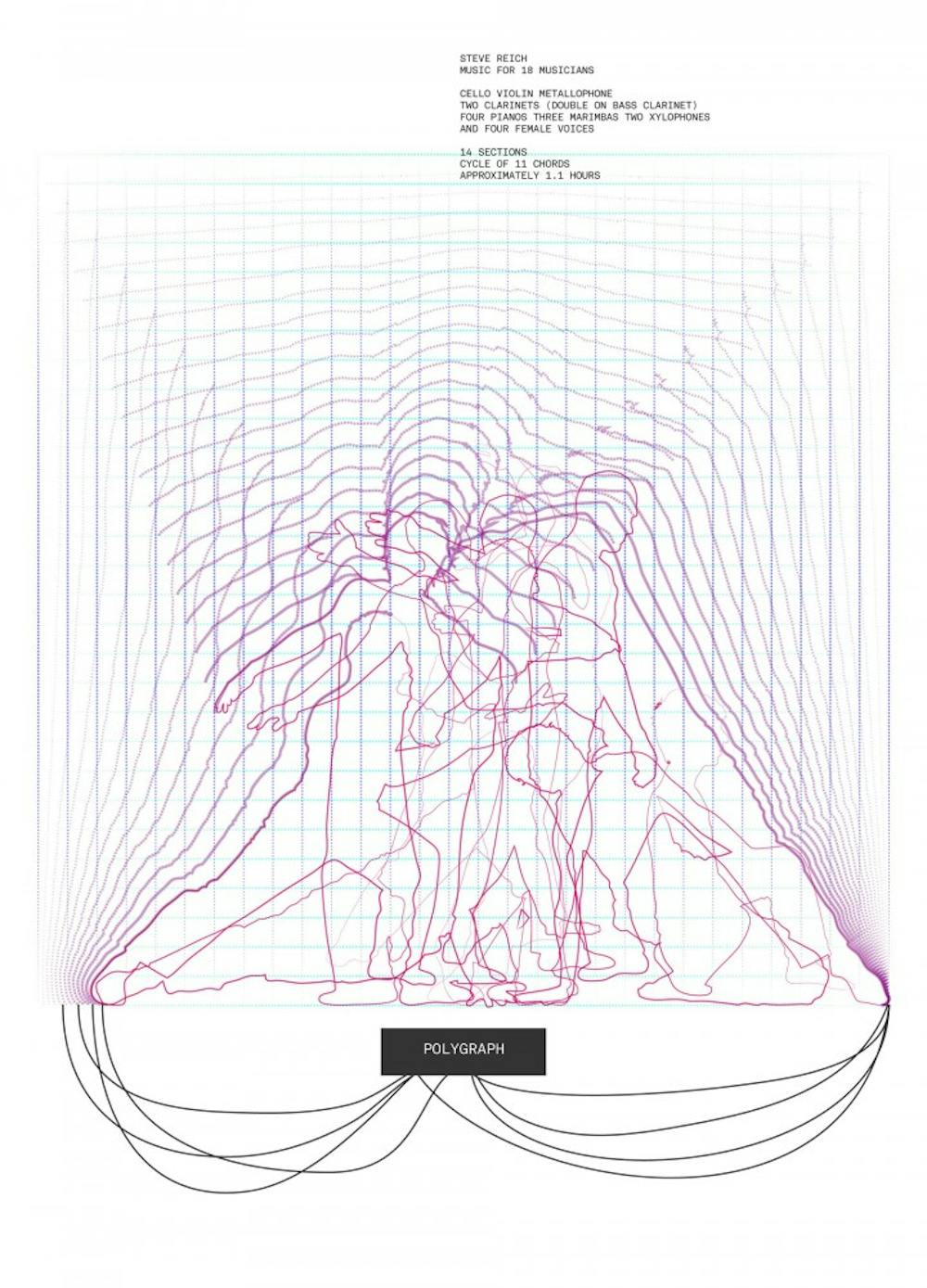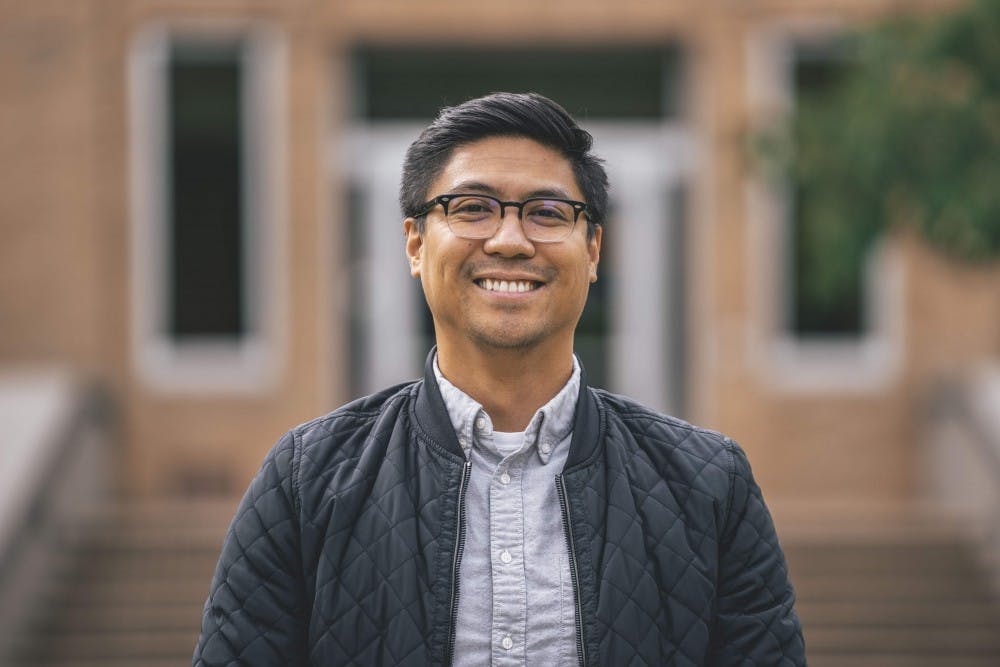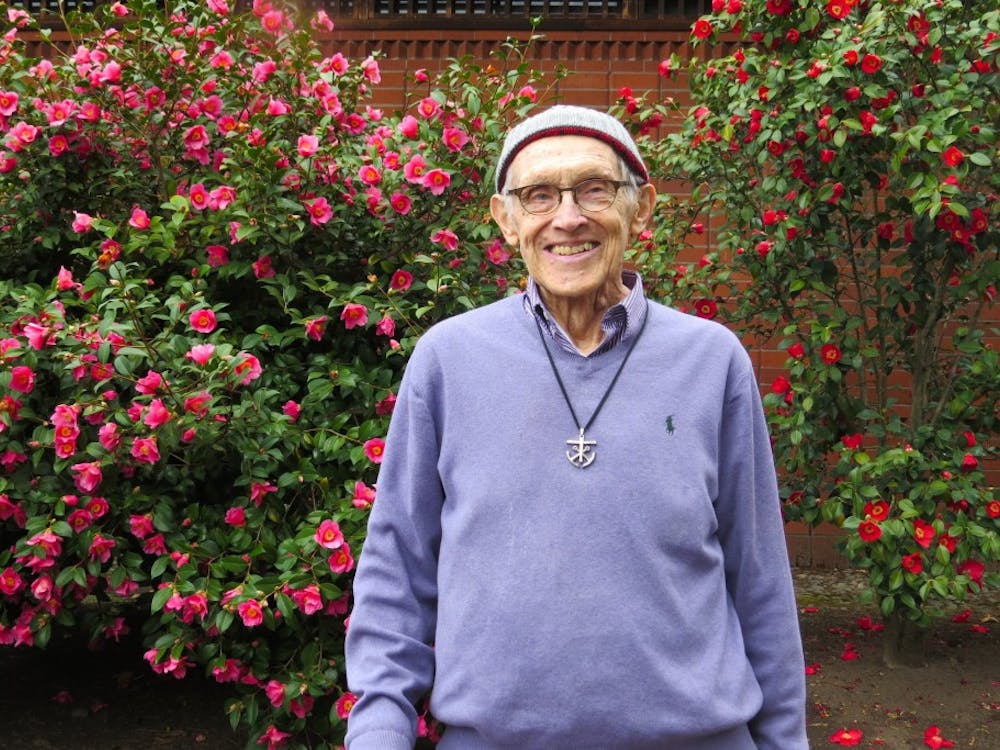When Salvador Orara drove from New York City to Los Angeles in 2010, he was unsure of what the future had in store. With his new degree in fine arts and experience working with companies such as the Metropolitan Museum of Art, Orara was determined to make an impact.
Orara is the innovation professor of practice and the director of the innovation minor, a new program of study at UP. He was hired during the first week of classes, and has several goals for the future of the program, bringing a long history of experience to the new program at UP.
“To me, designing can be a leading force in making change,” Orara said. “The individuals in this program are going to really understand how to creatively solve and design solutions to problems which aren’t traditionally taught in their major. If you’re looking for that design-driven mind, you come to the innovation program.”

SORG Architects Logotype
2008
Image courtesy Pentagram
Orara obtained his B.F.A in graphic design from the University of the Arts in Pennsylvania in 2005, with a focus on graphic design and interactive media. He began working for Map Office, a digital media agency in NYC. He worked with many clients, creating interactive kiosks at the Metropolitan Museum of Art and helping educational institutions create marketing and digital materials.
In 2010, Orara decided to move on and drove all the way to Los Angeles to attend graduate school at the Art Center College of Design and enrolled in the Media Design Masters program.
There, he focused on Experimental Interaction Design, which was a relatively new field of study. Orara was able to apply the technical knowledge he already possessed to the human experience aspect of the technology by exploring how consumers can interact with media in advertising. While in school, Orara was also a teaching assistant for many graphic designers in the area.

One Person: Music for 18 Musicians
Digital drawing
Abstract drawing of the re-appropriation of a polygraph device as a music sequencer to perform the phases found in Music for 18 Musicians by Steve Reich.
2011
Image courtesy the artist.
After graduating, Orara founded The Rare Studio, a company that provided design and media templates to early-stage and established companies looking to expand. Orara would hire less-experienced workers looking for relevant work, train them and arrange for them to take on contracts. This business model of providing training through real-world experience proved successful, with most employees leaving the company with their new knowledge and finding careers in their industry of choice.
While working full-time at The Rare Studio, Orara continued to teach digital media design classes at ACCD and Woodbury University. After four years of managing the company, Orara began looking for full-time teaching positions in the area.
“Running my own business was never something I wanted to do, it just kind of happened,” Orara said. “I like being more hands-on, doing, making, designing, learning new things and discovering new ways of doing things.”
But Orara’s search for a teaching position was cut short.
In 2015, Orara’s wife was offered a job at Intel in Portland, and eventually, the couple moved to the city. Within a few months of arriving, Orara was offered a job as a part of the Jaguar Land Rover user experience team in Portland, where he worked for four years. He was the lead user experience strategist, working with different teams to create interactive prototypes for vehicles. After this, he transitioned to a managerial position, leading multiple teams.
After some time in Portland, Orara missed the teaching aspect that had been such a major component of his career throughout school and The Rare Studio. He began working at Pacific Northwest College of Art, teaching Augmented and Virtual Reality, as well as Intro to Interactive Media courses.

Tonalis Luminous
PVC pipes, glass, solenoids, photo-resistors, microcontroller
Interactive rhythm machine that interacts with light; with specific behavioral responses or moods, informing the different light interactions throughout the day.
2011
Image courtesy the artist
Just a few weeks ago, Orara was officially offered the positions of innovation professor of practice and director of the Innovation minor, and he was eager to accept. He is now looking forward to sharing his knowledge and experience with students.
Drew Varcoe is a first-year student who is planning on adding the minor while at UP. Though she is currently undeclared, she is leaning towards Integrative Health studies. She thinks that a background in innovation could be beneficial towards her future career.
“I think the minor would help me have a more modern mindset in the integrative health world,” Varcoe said. “I don’t want to take the traditional nursing or doctor approach, and being able to design and come up with solutions to new problems in whatever industry I end up in would be super helpful.”
Since arriving at UP, Orara has appreciated the change from his previous work and academic environments and looks forward to expanding the innovation department at UP.
“I’ve been teaching at art schools for the last eight years or so, so the culture and facilities and everything is so new to me,” Orara said. “I’ve never really had the classic campus experience, and this is actually the first office I’ve ever had in my entire career. So far, I love the strong sense of community that really bonds everybody. From my first week, I felt really welcomed and embraced in the community.”

Environmental Graphics for 88 Morningside Real Estate Sales Office, NY, NY.
Paper, push-pins
2009
Image courtesy Pentagram
Orara is excited to help students learn about this area of study which is becoming increasingly popular in the U.S.
This mindset is what led Orara to his new position as director of the Innovation program. Associate Professor of Marketing Ian Parkman was on the hiring committee and is excited for Orara to share his knowledge with students.
“He is one of the best design thinkers in Portland, and we are so excited to have Sal on campus,” Parkman said. “Innovation is all about doing and Sal is one of the best ‘doers’ we could have hoped for for a program like this.”
Carlos Fuentes is a reporter for The Beacon. He can be reached at fuentes22@up.edu.








